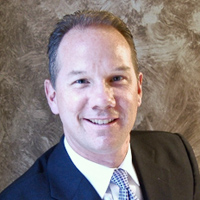Can You Save Too Much in Your 401(k)?
Over-investing in your 401(k) can lead to a taxing retirement. It's one of the biggest mistakes investors tend to make, and it’s avoidable.


When people meet a doctor at a party, they ask about a pain or a rash.
When they meet a financial professional, they’ll try to get a stock tip.
I won’t go there. But if the person seems genuinely interested, I’ll ask, “Is your portfolio diversified?”
From just $107.88 $24.99 for Kiplinger Personal Finance
Be a smarter, better informed investor.

Sign up for Kiplinger’s Free Newsletters
Profit and prosper with the best of expert advice on investing, taxes, retirement, personal finance and more - straight to your e-mail.
Profit and prosper with the best of expert advice - straight to your e-mail.
Usually the answer is yes; they’ll say they have stocks, bonds and mutual funds.
And I’ll say, “I mean are you tax diversified?” Most people haven’t put much thought into that, because they haven’t thought about what the taxes will be when they start to withdraw their retirement funds. So we talk about tax-deferred accounts (such as 401(k), traditional IRA or 403(b) accounts); taxable (brokerage-type) accounts; tax-free accounts (Roth 401(k) or Roth IRA); and other after-tax investments.
People tend to stick with the conversation when I tell them that one of the biggest mistakes I see investors make is overfunding their tax-deferred retirement accounts.
A Pervasive Problem
A large percentage of the people I meet with – probably 80% to 90% – have almost all of their money in a 401(k), traditional IRA or some type of qualified retirement account. Why? Because it’s easy, and that’s what they’ve always read or been told to do.
Any article about retirement over the last 20 to 30 years wants savers to believe a 401(k), with its before-tax automatic payroll withdrawals, is the best thing going, because it will help set them up for retirement. And it’s managed to suck a lot of individuals in on that premise. Most of the stories are only discussing the tax savings today and tax-deferred growth. But they aren’t discussing the exit strategy from these plans.
Unfortunately, what consumers don’t realize is how that money is going to be taxed when they add in the rest of their retirement income – Social Security and a pension, if they have one. They may think their tax brackets will be lower in retirement because their incomes will be lower then. The reality is that most people don’t want to see their incomes dramatically drop when they retire.
Also, many will not have the itemized deductions that helped them in the past to reduce their tax bills. Further, Uncle Sam wants his money, and he knows how to get it. Retirement accounts have what’s known as the 70½ rule, where there is a required minimum distribution (RMD) for all accounts. It is a specified percentage that has to be taken out, whether the funds are needed or not. Also, this percentage increases as the person gets older, because it’s based on life expectancy.
The Result, in Dollars and Cents
That means I see things like the client who is paying $268 a month this year for her Medicare Part B premiums, which is double the standard premium of $134 a month. Because her modified adjusted gross income (which includes all taxable income plus one-half of her Social Security income) is above $107,000, she must pay a “high-income surcharge.” That’s another $1,600 a year that, in my opinion, is just another tax.
More often, I hear from people who decide to take money out of a retirement account to pay for some end-of-the-year splurge – maybe a new car or a Christmas cruise for the family. What’s the harm, they tell themselves. We’re over 59½, so there’s no extra penalty, right?
Except they’re already taking regular monthly income distributions that are taxable, plus this lump-sum distribution. And they’re getting Social Security payments – of which up to 85% could also be taxable – and possibly a pension or additional income. Many times that results in additional taxes due, because when you add up ALL of the taxable income for the year, they haven’t paid enough taxes on ALL of their income. If that’s the only or main asset you have for income, big purchases, vacations, home repair, etc., every dollar of your distributions will be subject to ordinary income taxation.
What You Can Do
What can you do to lessen the blow?
There is no one-size-fits-all strategy, but one thing you might consider is what I refer to as filling the top of your bracket.
Let’s say you’re married and you’re in the 25% tax bracket with an adjusted gross income of $130,000. But that bracket actually goes up to $153,100. Would it make sense to convert $20,000 from an IRA/401(k)/403(b), etc. to a Roth IRA now, pay the tax now, and then get that deferred growth and have it tax-fee when you decide to withdraw it? Maybe not all $20,000, but it’s something to look at each year in the fourth quarter.
If you’re still working, you should only be funding your 401(k) up to your company match, and then, if your company offers a true Roth 401(k), divert the rest of the money you’re saving into that account. If you qualify for a Roth, it’s a great thing. Or just pay tax on the money and put it into a regular investment account, so you can take advantage of long-term capital gains.
This is why it pays, literally, to have a financial professional who takes a holistic approach to your portfolio. Someone who looks only at where your money is invested isn’t going to give you the whole picture. You need a professional who also will take care of your hard-earned savings with a sound tax strategy.
Kim Franke-Folstad contributed to this article.
Matt Hausman is the founder and president of Old Security Trust Corp. and Old Security Group, a Registered Investment Advisory Firm. Matt is an Investment Adviser Representative with Old Security Group and a licensed insurance professional.
Investment Advisory Services are offered through Old Security Group, a Registered Investment Adviser.
Profit and prosper with the best of Kiplinger's advice on investing, taxes, retirement, personal finance and much more. Delivered daily. Enter your email in the box and click Sign Me Up.

Matt Hausman is the founder and president of Old Security Trust Corp. and Old Security Group, a Registered Investment Advisory Firm. He focuses on helping clients recognize when they are unknowingly and unnecessarily transferring away their wealth, and believes in helping empower consumers through effective information on financial strategies. Matt has passed the Series 65 exam and holds life, health and title licenses in multiple states.
-
 Snowbirds: Avoid These 3 Sneaky Insurance Issues
Snowbirds: Avoid These 3 Sneaky Insurance IssuesBefore snowbirds depart for their winter retreat, they should check their insurance coverage for surprises that might arise, or else be on the hook for repairs.
-
 Hang in There With This Value Fund
Hang in There With This Value FundPatience is required for investors in the Dodge & Cox Stock Fund, but its long-term outperformance proves it's worth the wait.
-
 I'm a Financial Planner: Here's How to Make the Most of Your Charitable Giving on a Budget
I'm a Financial Planner: Here's How to Make the Most of Your Charitable Giving on a BudgetMaximizing the charitable donations you plan to make this year can help your financial plan stay on track and help give the most to the causes you care about.
-
 I'm a Wealth Planner: These 3 Steps Can See You and Your Heirs Through a Wealth Transfer
I'm a Wealth Planner: These 3 Steps Can See You and Your Heirs Through a Wealth TransferBoth givers and receivers need to be seriously strategic about communicating, understanding tax efficiency and leveraging smart money moves.
-
 Unwrapping Your Estate Plan for Your Kids: A Gift That'll Keep Giving Long After the Holidays
Unwrapping Your Estate Plan for Your Kids: A Gift That'll Keep Giving Long After the HolidaysThe holidays offer families a perfect opportunity to discuss important, often difficult topics like long-term care, estate plans and legacy.
-
 5 Ways to Teach Your Kids About Giving Back, From a Financial Planner
5 Ways to Teach Your Kids About Giving Back, From a Financial PlannerTeaching kids generosity goes beyond simple rules and can involve fun, practical strategies, such as letting them lead giving, volunteering together and more.
-
 I'm a Financial Planner: Here's How You Can Use AI to Improve Your Finances
I'm a Financial Planner: Here's How You Can Use AI to Improve Your FinancesApps can help with budgeting, saving and investing, financial coaching and debt management. But providing your personal information can also raise your risks.
-
 When Checkout Charity Gets Uncomfortable — and Maybe Even Illegal
When Checkout Charity Gets Uncomfortable — and Maybe Even IllegalCashiers asking customers to 'round up' their total for charity can cross an ethical line if there's no disclosure about the benefiting organization.
-
 Four Ways to Find Free Money to Pay for College: Affluent Families Can Apply, Too
Four Ways to Find Free Money to Pay for College: Affluent Families Can Apply, TooFamilies can access scholarships, grants and incentives by strategically positioning their students in terms of merit, skills and timing.
-
 3 Tax-Smart DAF Strategies Advisers Can Put to Work for Clients During Giving Season
3 Tax-Smart DAF Strategies Advisers Can Put to Work for Clients During Giving SeasonDonor-advised funds can help clients maximize their philanthropy through front-loading deductions, donating appreciated assets and 'bunching' contributions.